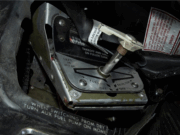Drugs are being found more often in the bodies of pilots killed in aircraft crashes, the U.S. National Transportation Safety Board (NSTB) says.
In a report released Tuesday, the NTSB said that the presence of prescription, over-the-counter and illegal drugs has increased since an earlier study, conducted in 2014.
The new study, Safety Research Report: 2013–2017 Update to Drug Use Trends in Aviation, examined toxicology test results for 952 pilots killed in crashes. The study found that 28 percent of the pilots tested positive for at least one drug that the NTSB considered “potentially impairing,” compared with 23 percent in the 2014 study.
Specifically, the new study said that 15 percent tested positive for at least one drug that indicated the pilot had a potentially impairing condition, an increase of about 3 percentage points from the 2014 study. Test results also showed evidence that 10 percent had used at least one controlled substance, up from 8 percent in the 2014 study, and that 5 percent had used an illegal drug, up from 4 percent.
The NTSB said that the earlier study found that pilots did not have adequate access to information about potentially impairing drugs and safer alternatives. In response to a related NTSB recommendation, the U.S. Federal Aviation Administration (FAA) published guidelines to help pilots understand medication labels and to clarify the length of time a pilot should wait to fly after using a potentially impairing drug.
The new report also found an increase in the percentage of pilots whose bodies tested positive for the psychoactive compound THC, found in marijuana, and the NTSB called on the FAA to “explicitly inform pilots that marijuana use by airmen is prohibited.” Marijuana use “presents a safety hazard that hasn’t been effectively addressed,” the NTSB said.


